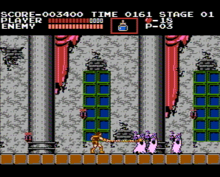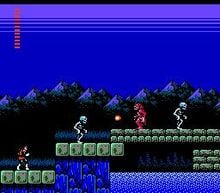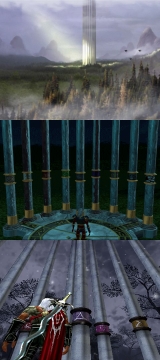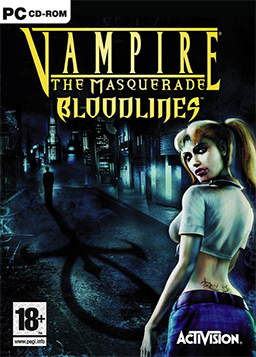

Old School Vampires GameIt’s 1986. “The First Vampire in China” and “Vampires” are airing at the local movie theater. Love Me Vampire, Vampire’s Breakfast and Vampires Live Again are appearing at the local book shops. And, Konami – a Japanese gaming studio about to become known worldwide in a few years – releases the first of what would prove to be the number one vampire video game series of all time – Castlevania.Vampire Hunting Wasn’t EasyCastlevania was preceded by a several other games in the genre specifically, Vampire Village from ZX Spectrum, Ghost House by Sega, The Count and Dracula. The last of which was something that seems ridiculous now – a text video game - published by CRL Group.Keep in mind, these were the very early years of home computers and video games. There was no “world wide web”, “google” or “social media”. Everything was created on diskette or floppy disk to be viewed later. The Count(1981) was another “text game” format but this one was released on a floppy disk -  something you’d see in the local computer museum or in a recycling bin for crafters who need unusual materials. Getting the character to run or jump only required four buttons on your computer keyboard, to be held simultaneously and even with that, the action was more like a fast walk than anything we would consider a “run” today. something you’d see in the local computer museum or in a recycling bin for crafters who need unusual materials. Getting the character to run or jump only required four buttons on your computer keyboard, to be held simultaneously and even with that, the action was more like a fast walk than anything we would consider a “run” today. Dracula (1986) was developed as a video-tape game – in the style of home videos - as the gaming industry was in the midst of exploring various schemes to gain market share and win over paying customers. Even though this game was another version of a “text game” at least the graphics were better and some of the background actually moved! Up to this point, forget the idea of maps and overworlds or even 2-dimension visuals. The games were static, slow, single-player games meant to entertain bored adults and young children. Like most of the earlier games, those released before Castlevania were marketed as real-time vampires or comic book games. Looking back on them on now, they did have that comic book appearance. It was extremely important that the player saved the game after every important move was completed or all would be lost to vampire eternity when the game got too hot and shut down unexpectedly. Along Came Castlevania Then, in September 1986, two phenomenal games – The Legend of Zelda and Castlevania - with 2-dimension visuals, mapped worlds with actual plot lines, played on special computer systems hit the market and video gaming was off and running – really!
Then, in September 1986, two phenomenal games – The Legend of Zelda and Castlevania - with 2-dimension visuals, mapped worlds with actual plot lines, played on special computer systems hit the market and video gaming was off and running – really! After playing static games for several years, is it any wonder that Nintendo’s gaming system and (in Japan) the MSX computer game system were welcome entertainment alternatives for the family? For the first time in video games, Castlevania allowed vampire hunting gamers the option of choosing when and how to approach objects, explore dungeons and collect objects. Compared to games of today, Castlevania is definitely one of the old school vampire games. But, it was the first step toward something that can be recognized now as a real video game. Castlevania was such a hit that it turned into a major series that is still being produced even now.  The second in the series is Simon’s Quest released in 1987. Konami added an overworld map feature and experience ranking for the first time. This is when the virtual worlds had day-night cycles included. During the night cycle, Simon’s enemies increase and become much tougher to kill than their daytime cousins. The second in the series is Simon’s Quest released in 1987. Konami added an overworld map feature and experience ranking for the first time. This is when the virtual worlds had day-night cycles included. During the night cycle, Simon’s enemies increase and become much tougher to kill than their daytime cousins. This was also the first time that the concept of three endings was introduced. Since each ending depended on the length of time it took to complete the game, gamers could replay the game with a different experience. Simon’s Quest was much more similar to an RPG than other games of the time. In 1989, Konami contributed a huge leap in virtual games that opened the door to multi-player games and the idea of social competitions with Dracula’s Curse. However, the RPG feature was dropped in this version and the company returned to a similar player format found in the original. Koji Igarashi – known among Castlevania fans as IGA – gave an interview a couple years ago and was asked his opinion about why the game was such an instant success. He thought that the initial attraction was the image of a macho man who beats up monsters was part of it. For some early players, this aspect had an empowering effect that was lacking in many of the games – like Golf – on the market. IGA was the one who changed the character image from a young man to a more elite, sophisticated grown up in the games that followed. Perhaps, this growth of the main character has a lot to do with its continued success. Old School Vampires Games of the 90s and Early 2000s Blood Omen: Legacy of Kain, released 10-years after Castlevania had become a household name, introduced a fantasy vampire world that didn’t resemble the earth. The plot line was unique to the era. Blood Omen: Legacy of Kain, released 10-years after Castlevania had become a household name, introduced a fantasy vampire world that didn’t resemble the earth. The plot line was unique to the era. Taking on a religious element of resurrection and the concept of curing or saving vampires by curing them, the game opened the door to more unconventional characters. Even though Kain was seeking revenge after his personal resurrection, he stood by his moral convictions that a cure should be developed and he should still fight for what was right. Soul Reaver, released in 1999, continued the religious theme introducing another Biblical theme using a shape shifter mythology as its inspiration. Curiously, the first book of the Left Behind series dealing with the anti-Christ and resurrection was published in 1995. In 1999, the other major society favorite genre – detective stories – produced a detective whose job was to hunt down vampires in Countdown Vampire. This one takes place in a Las Vegas casino – unnamed – where gamblers and his celebrity boss are trapped at the tables as some black goo oozes its ways across the carpets, turning all it touches into vampires. Thank heavens; Sgt. Snyder is there to fight the newly ordained vampires who are eating the rest of the crowd! After the trauma of 9-11, a new twist was added to vampire video games. Blood Rayne (2002) used the backdrop of a Louisiana swamp town, an old castle in Germany and a Nazi stronghold in some town of Argentina to fight vampires and the rising Nazi army as a preamble to World War II. Playing on the need to fight just wars and release the tensions of real ones taking place in the Middle East, retired soldiers and those who were too young to join the real battles found a way to express their heroism in this game.  In November of 2004 – just in time for Christmas! – ActiVision released Vampire the Masquerade – Bloodlines for all those starving vampire hunters in need of a new fix. Instead of gaining experience points through the slaying of vampires, this game requires the player’s character to learn new skills and abilities for the experience upgrades. In November of 2004 – just in time for Christmas! – ActiVision released Vampire the Masquerade – Bloodlines for all those starving vampire hunters in need of a new fix. Instead of gaining experience points through the slaying of vampires, this game requires the player’s character to learn new skills and abilities for the experience upgrades. Bloodlines was not just another RPG for multi-players. It was the first of its kind to allow players the option to choose which character they want to play. This is a much more complex video game than the original Castlevania of 1986. It involves different levels of rewards and penalties, methods of gaining levels, magic items, and humanity points and each reward applies to a different attribute of a particular character. Darkwatch, a vampire video game of 2005, combined the Old West with the main character – Jericho - as the outlaw who caused the release of the vampire – Lazarus - into the world. Of course, Laz bites Jerry and Jerry’s horse, too turning them into vampires. The savior of this saga is Agent Cassidy Sharp – the sexy vampire hunter hot on the trail to recapture Lazarus and Jericho before they destroy too much of her beloved Arizona. Why Old School Vampire Video Games Were PopularIn truth, there are as many reasons as there are people who play vampire games for the popularity that they gained ever since Castlevania entered the scene. One reason for the initial adoration is that the vampires were actually cute and had cute weeble-wobble ways of running. There was nothing frightening about them and nothing realistic about the player chasing them, either.It was just a fun way to be the hero in a make-believe world. The plot lines were simple and attacking candles was a great way to get food points. The old school vampire games were easy to play and stress releasers, too. One thing for certain, though, is that playing those games after playing the modern versions today would be boorrrring. |